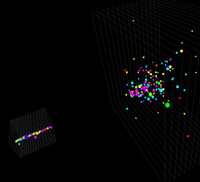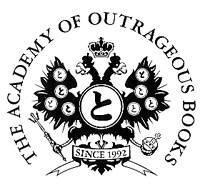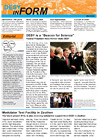 |
|
|
 |
CALICE calorimeter prototypes record 20 million of interactions

An event-display of the CALICE summer test-beam. A pion of 30 GeV is entering the calorimeter on the left, crossing first the electromagnetic calorimeter and then interacting in the hadronic calorimeter. |
This summer, in the H6 zone of CERN, the CALICE (Calorimeter for Linear Collider Experiment) collaboration carried out test-beams which will continue until the end of October. Three prototypes were installed in a test-beam together with trigger and acquisition systems: a highly segmented electromagnetic silicon tungsten (ECAL), a hadronic scintillator tile-silicon photomultiplier (HCAL) calorimeters and a tail catcher, made of scintillator strip-silicon photomultipliers. All together they represent about ten thousand read-out channels. "By now, approximately 20 million interactions have been recorded," said Jean Claude Brient, spokesperson of the CALICE collaboration, "and we expect 30 million of them by the end of the test."
Read more...
-- Perrine Royole-Degieux |
 |
|
|
 |
|
 |
 |
|
|
 |
Texas A&M University Sponsors Next USPAS - Houston, Texas, 15-26 January 2007

Students at the last winter session of the USPAS in January 2006 at Arizona State University. |
Every year for roughly the past twenty years, the U.S. Particle Accelerator School has organised two-week-long summer and winter sessions, comprised of courses for the scientific and engineering communities in the field of particle physics, nuclear physics, basic energy sciences, fusion and related accelerator technologies. Providing specialised accelerator physics and engineering courses that are not often available at universities, the USPAS has helped train thousands of students over the years, including more than 500 international participants and more than 1600 individuals from Department of Energy and National Science Foundation laboratories. The average attendance at USPAS sessions is about 130 students. This year, Texas A&M University will sponsor the winter session of the USPAS in Houston, Texas from 15-26 January 2007.
Read more...
-- Elizabeth Clements |
 |
|
|
 |
|

Last Friday the final pieces of a 35-year resident of Fermilab, the Chicago Cyclotron Magnet, were dismantled and taken away. John MacNerland, who has been at Fermilab 26 years, watched the proceedings from the Lattice Computing Center windows. "[When the magnet was in use] it was a wonderful thing and great people directed the experiments. But now we look for what is next. Time marches on and we move to bigger and better things."
|
 |
|
|
 |
From physorg.com
11 September 2006
Dark Energy and Dark Matter – The Results of Flawed Physics?
"...even though scientists don't know what either is and have little evidence to prove they exist, dark energy and dark matter are two of the biggest research problems in physics. But what if they were conceived in error ?"
Read more... |
|
From ANSA
11 September 2006
Italy starts new chapter in physics
"Neutrinos are invisible and pass through matter without leaving a trace. They could account for the mysterious deficit of matter in the visible universe."
Read more... |
|
From interactions.org
11 September 2006
CERN switches on neutrino beam to Gran Sasso
"CERN has switched on a new neutrino beam, aimed through the earth to the INFN Gran Sasso Laboratories some 730km away near Rome."
Read more... |
|
From The Onion
5 September 2006
Caltech Physicists Successfully Split the Bill
"...the mathematics of going out for a meal with friends..."
Read more... |
|
|
 |
Today's issue features a Director's Corner from Mitsuaki Nozaki, GDE Asian Regional Director.
To-Gakkai meets the ILC

The To-Gakkai coat of arms. |
Science is a great achievement of human endeavour and culture. Yet sometimes people get confused about the distinction between science and foolish ideas. Some of these outrageous opinions can be found on the internet, such as "Apollo never landed on the Moon." It helps to have friends who would persuade people and explain why these opinions are nonsensical with a certain touch of humour. In the US, there is such a site called badastronomy.com.
Read more...
-- Mitsuaki Nozaki, GDE Asian Regional Director
Director's Corner Archive |
 |
|
|
 |

DESY inForm |
Get inFormed
Particle physicists must be one of the best-informed communities in the world. There are weekly bulletins, daily updates, monthly summaries, NewsLines, magazines like the CERN Courier and symmetry, and almost every lab has its own newsletter to keep its staff informed about what’s happening on and around the site. The latest addition to the glorious list of particle physics publications bears the telling name InForm and is DESY’s brand-new one-page full-colour in-house magazine. The first edition came out last Thursday, new ones will follow on every first Thursday of the month. Just like Fermilab Today or SLAC today, you can subscribe to it. Have a look at the first edition here (in German or English) and send an email to inform@desy.de in case you would like to subscribe. |
|
ILC-Related Preprints
hep-ph/0609069
6 Sep 2006
Rare Decay of the Top t->c l lbar and Single Top Production at International Linear Collider |
|
EUROTeV Reports
EUROTeV-Report-2006-024
The EUROTeV Confocal Resonator Monitor Task
EUROTeV-Report-2006-029
Faktor 2: A Code to Simulate Collective Effects of Electrons and Ions
EUROTeV-Report-2006-033
Measurement of Ground Motion in Various Sites
EUROTeV-Report-2006-038
Benchmarking of Tracking Codes (BDSIM/DIMAD) Using the ILC Extraction Lines
EUROTeV-Report-2006-042
Development of a Superconducting Helical Undulator for the ILC Positron Source
EUROTeV-Report-2006-050
Study of an ILC Main Linac that Follows the Earth Curvature
EUROTeV-Report-2006-074
Wakefield Calculation for 3D Collimators
EUROTeV-Report-2006-080
Power Losses in the ILC 20 Mrad Extraction Line at 1 TeV
EUROTeV-Report-2006-082
Accelerator Component Vibration Studies and Tools |
|
|

